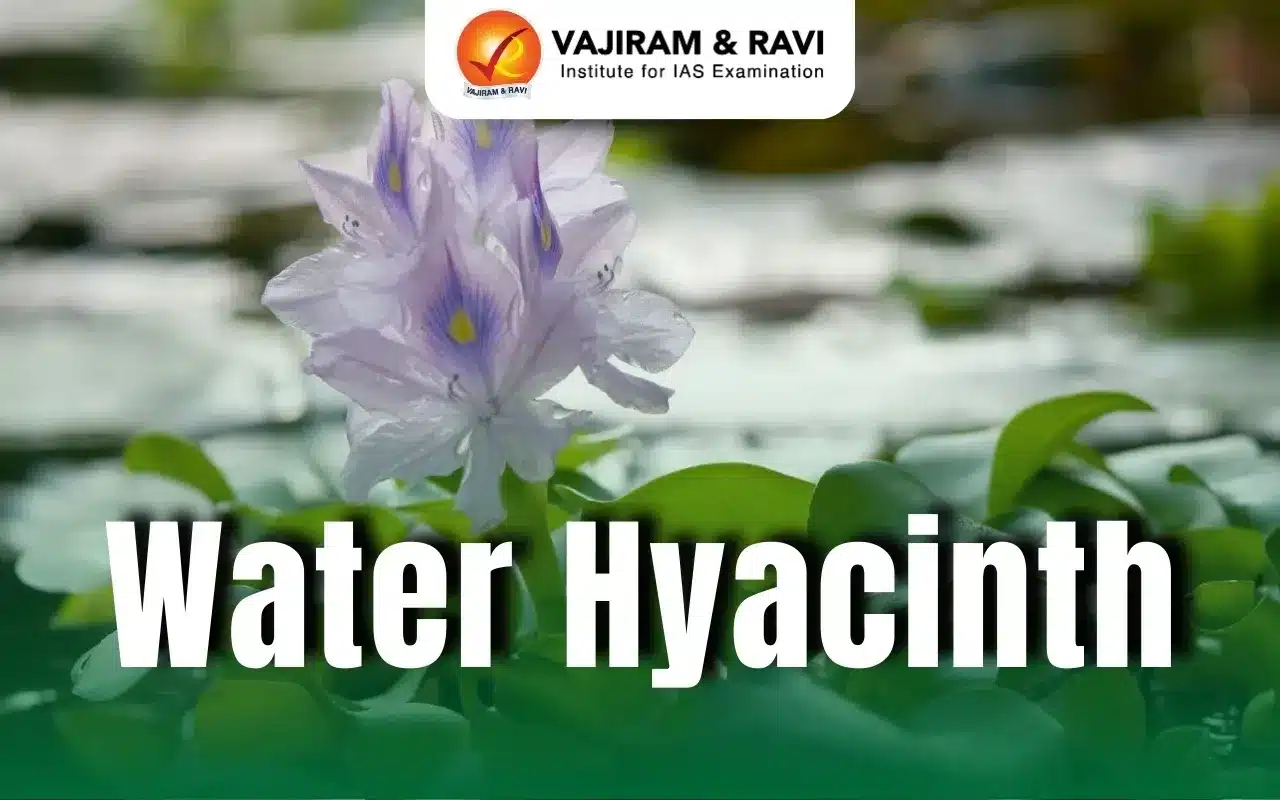Water Hyacinth Latest News
A thick blanket of water hyacinth covers the Mula river near Holkar Bridge, raising alarms among residents about the river’s deteriorating condition.
About Water Hyacinth
- It is a free-floating, aquatic plant in the pickerelweed family.
- Scientific Name: Eichhornia crassipes
- It is native to tropical regions of South America and is now present on all continents except Antarctica.
- It is one of the world’s most serious water weeds because of its aggressive, fast-growing nature.
- It can form dense mats that reduce the water quality, change water flows, and increase sediment.
- It crowds out native aquatic plants and animals, altering ecosystems, destroying habitats, and blocking irrigation systems.
- It has thick, glossy green leaves and lavender to violet flowers with a yellow spot.
- It was introduced to India during the British colonial rule as an ornamental aquatic plant from South America.
Water Hyacinth Uses
- The plant has been used as a biofertilizer in some organic agriculture practices.
- The plant produces beautiful purple flowers that have high aesthetic value.
- It is rich in fibrous stems that can be processed into a wide array of handbags, interior decorative material, table mats, baskets, and other products.
- It has been reported that this plant is a good phytoremediation species, suggesting it has the ability to trap and remove toxic metabolites and harmful heavy metals from water.
Water Hyacinth FAQs
Q1. Why is water hyacinth harmful?
Ans. Water-hyacinth blocks waterways and limits boat traffic, recreation, flood control and wildlife use
Q2. Why is water hyacinth called the Terror of Bengal?
Ans. Water hyacinth is called the “Terror of Bengal” due to its highly invasive nature and the severe environmental and economic problems it causes in the region.
Q3. What is water hyacinth good for?
Ans. The water hyacinth collected can be used to feed animals, or processed to improve the soil, as compost or biochar.
Source: TOI
Last updated on June, 2025
→ UPSC Notification 2025 was released on 22nd January 2025.
→ UPSC Prelims Result 2025 will be out soon for the CSE held on 25 May 2025.
→ UPSC Prelims Question Paper 2025 and Unofficial Prelims Answer Key 2025 are available now.
→ UPSC Calendar 2026 is released on 15th May, 2025.
→ The UPSC Vacancy 2025 were released 1129, out of which 979 were for UPSC CSE and remaining 150 are for UPSC IFoS.
→ UPSC Mains 2025 will be conducted on 22nd August 2025.
→ UPSC Prelims 2026 will be conducted on 24th May, 2026 & UPSC Mains 2026 will be conducted on 21st August 2026.
→ The UPSC Selection Process is of 3 stages-Prelims, Mains and Interview.
→ UPSC Result 2024 is released with latest UPSC Marksheet 2024. Check Now!
→ UPSC Toppers List 2024 is released now. Shakti Dubey is UPSC AIR 1 2024 Topper.
→ Also check Best IAS Coaching in Delhi






















